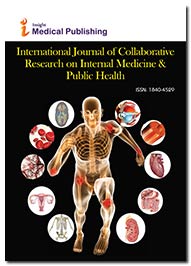Abstract
The use of transthoracic echocardiography for diagnosis of pulmonary embolism: a case report and review literature
Introduction: Pulmonary embolism (PE) is a common condition but if it is diagnosed with delay, it can cause serious morbidity or mortality. Herein we evaluated the role of transthoracic echocardiography (TTE) as a real-time, non-invasive, portable, and cost-efficient modality in diagnosis of PE in critically ill patient.
Case: We report a successful application of bedside TTE in a 55-years-old man presenting with dyspnea and unstable hemodynamic. Bedside echocardiogram showed a free-flouting thrombus at the main pulmonary artery bifurcation.
Discussion: Although TTE can be used for rapid risk stratification in patients with PE, it provides a means for rapid, reproducible, portable, and cost-efficient diagnostic modality in the setting of high clinical suspicion of PE. The sensitivity and specificity of TTE for diagnosis of PE ranged between 29% and 52% and between 96% and 87%, respectively. Echocardiographic signs used in the diagnosis of acute PE include reduced RV size and function, direct visualization of thrombus, reduced LV cavity size, dilated pulmonary arteries, interventricular septal flattening, paradoxical septal motion, tricuspid regurgitation, increased velocity of tricuspid regurgitation jet, and dilatation of IVC.
Conclusion: Although TTE had a low sensitivity for diagnosis of PE, this modality is noninvasive, cost-efficient, portable, and helps us to differentiate between the etiologies of hypotension in the unstable patients
Author(s): Mohammad Javad Alemzadeh-Ansari , Mohammad Hasan Alemzadeh-Ansari
Abstract | PDF
Share this

Abstracted/Indexed in
- Google Scholar
- Genamics JournalSeek
- CiteFactor
- Directory of Research Journal Indexing (DRJI)
- WorldCat
- Proquest Summons
- Secret Search Engine Labs
Open Access Journals
- Aquaculture & Veterinary Science
- Chemistry & Chemical Sciences
- Clinical Sciences
- Engineering
- General Science
- Genetics & Molecular Biology
- Health Care & Nursing
- Immunology & Microbiology
- Materials Science
- Mathematics & Physics
- Medical Sciences
- Neurology & Psychiatry
- Oncology & Cancer Science
- Pharmaceutical Sciences

